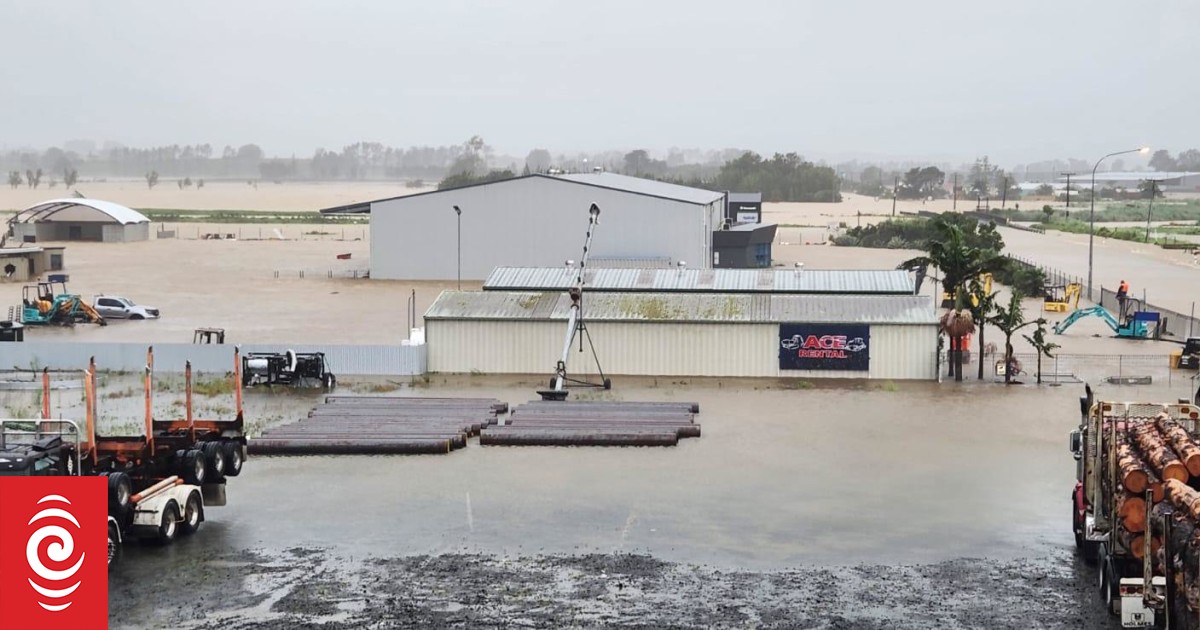
ACE Rentals in Dargaville have been delivering excavators and sweepers to help clear storm damage, but the company’s yard flooded with the heavy rain.
Photo: Supplied/ ACE Rentals
Twenty Kaipara properties have been red-stickered as the district begins to count the cost of Cyclone Gabrielle’s fury.
Most of these were in Dargaville.
Kaipara Mayor Craig Jepson said this was an early estimate as building inspectors assessed Cyclone Gabrielle’s impact.
Kaipara authorities were on Thursday working to get a better picture of how badly hit still-inaccessible rural and remote areas around the district were.
Jepson said a more thorough picture of these areas was needed.
A Defence Force unimog is delivering food and fresh water to Kaipara’s Pouto and Kaihū as communities cut off by flooding run out of supplies.
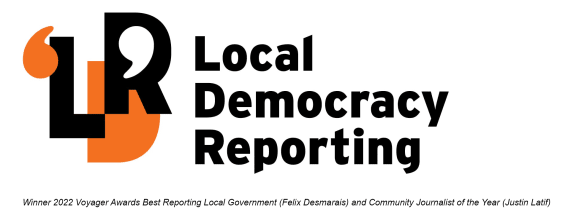
Jepson said the unimog was heading to Pouto to provide the much-needed supplies and would also be delivering to Kaihu.
The tiny isolated community of Pouto is at the very tip of Pouto Peninsula and about an hour’s drive south of the town.
Getting pumps to those who were flooded was among the goals of the recovery work, he said.
Jepson said the community and emergency response teams had been doing a great job of supporting each other around Dargaville and across Kaipara in the wake of Cyclone Gabrielle hitting.
“The community has been marvellous,” Jepson said.
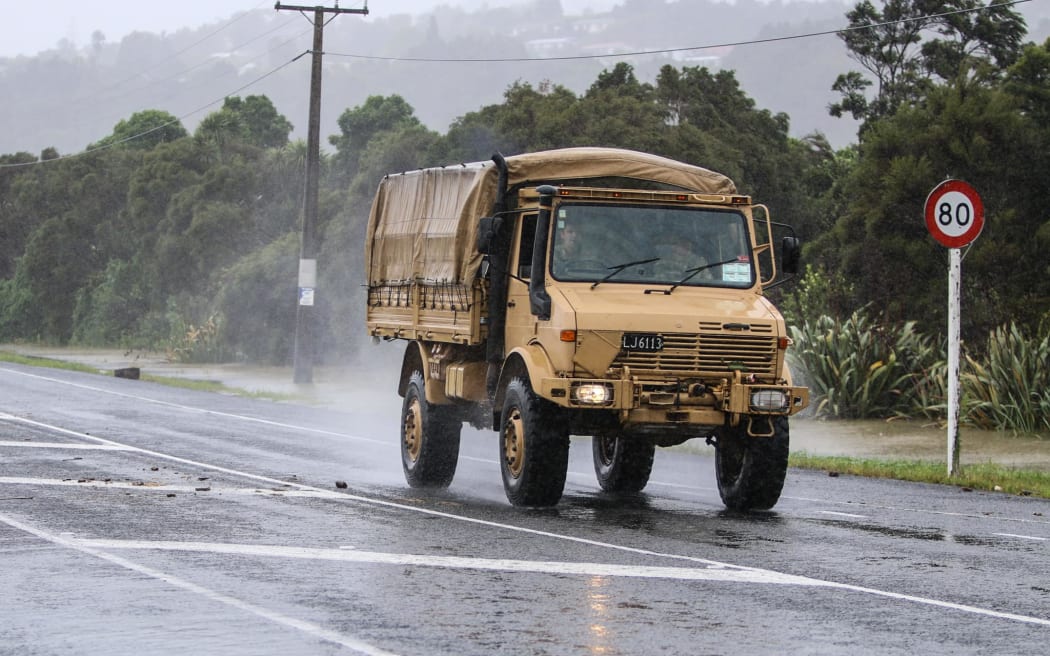
Defence Force unimog makes its way into Northland.
Photo: Jay’s Photography
Overnight, Dargaville was lucky to avoid further flooding as the biggest floodwater peak since 1958, when records began, started heading from Hikurangi Swamp and beyond down Northern Wairoa River and towards the town en route into the Kaipara Harbour. The floodwaters arrived 36 hours after Cyclone Gabrielle flooding hit Hikurangi Swamp and beyond. The peak arrived around Dargaville overnight but thankfully outside peak high tide times.
Kaipara Harbour is one of the world’s biggest harbours, covering 950 square kilometres at high tide and draining 6500 square kilometres of land.
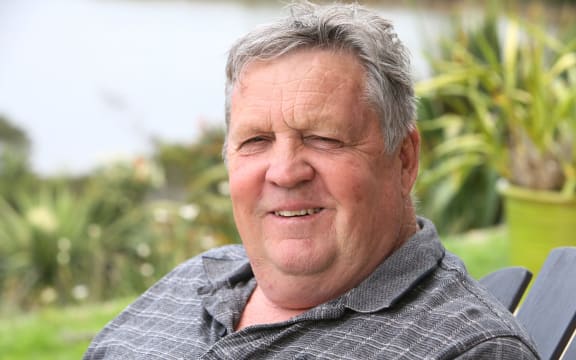
Kaipara Mayor Craig Jepson.
Photo: Northern Advocate / Tania Whyte
Jepson was on Thursday in Dargaville and visited the town’s Civil Defence evacuation centre.
He had headed to Dargaville after spending a couple of hours on a digger in Mangawhai clearing storm debris from the Mangawhai foreshore.
Dargaville-based councillor Gordon Lambeth, who is Kaipara District Council (KDC’s) representative on the Northland Civil Defence Emergency Management Group and chairs the local Fire and Emergency New Zealand (FENZ) advisory group, said there had been three stages to Cyclone Gabrielle hitting the town and surrounds.
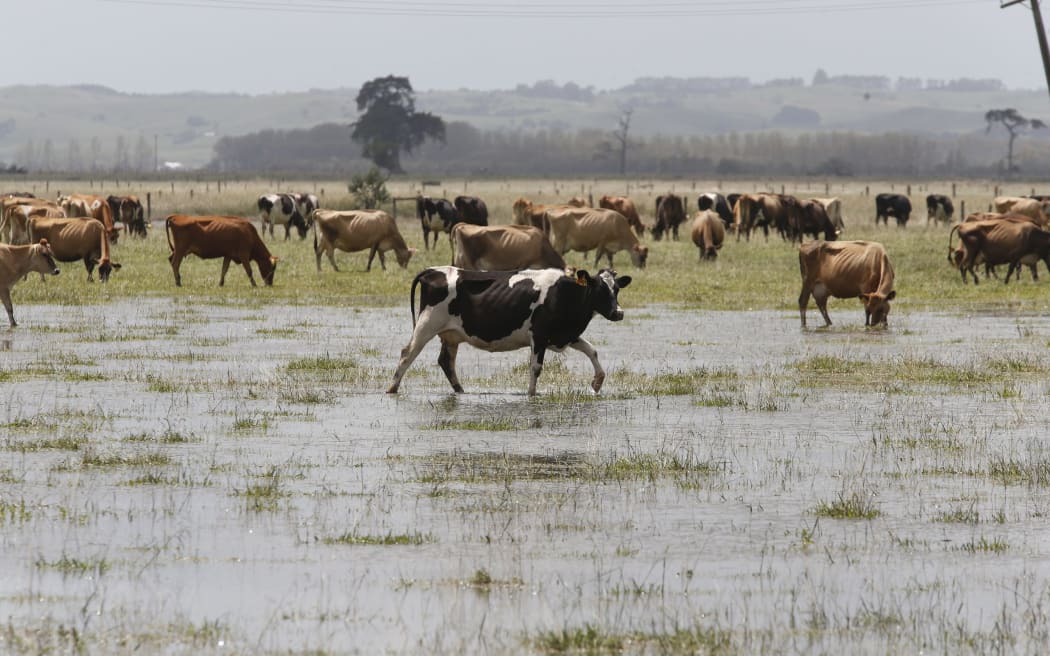
Cyclone Gabrielle flooding in Ruawai.
Photo: Northern Advocate / Michael Cunningham
The first had been the Awakino River on Dargaville’s eastern outskirts bursting its banks from the sheer volume of rainfall in its Tangowahine catchment and cutting off State Highway 14.
Lambeth said he had never seen that happen in his 60 years in the area.
The second was on Tuesday afternoon when NIWA had indicated a storm surge was at risk of breaching the Ruawai stopbanks and a potential major evacuation of the area about 30 kilometres south of Dargaville was prepared.
The third was then the huge volume of extra floodwaters from Hikurangi Swamp and beyond in Kaipara Harbour’s north-east catchment hills hitting the Northern Wairoa River which flows past the town of 5000 people.
He said flooding impacts from the Awakino River bursting its bank had not resulted in Dargaville’s sewage treatment plant getting into trouble. There had been no sewage contamination in floodwaters.
Jepson said the council’s Mangawhai sewage treatment plant had not had problems, in spite of coping with a huge quantity of extra stormwater about the place.
Local Democracy Reporting is Public Interest Journalism funded through NZ On Air

